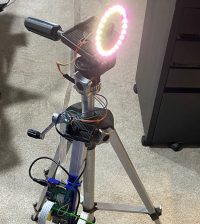- makeITcircular 2024 content launched – Part of Maker Faire Rome 2024Posted 2 weeks ago
- Application For Maker Faire Rome 2024: Deadline June 20thPosted 2 months ago
- Building a 3D Digital Clock with ArduinoPosted 7 months ago
- Creating a controller for Minecraft with realistic body movements using ArduinoPosted 7 months ago
- Snowflake with ArduinoPosted 8 months ago
- Holographic Christmas TreePosted 8 months ago
- Segstick: Build Your Own Self-Balancing Vehicle in Just 2 Days with ArduinoPosted 8 months ago
- ZSWatch: An Open-Source Smartwatch Project Based on the Zephyr Operating SystemPosted 9 months ago
- What is IoT and which devices to usePosted 9 months ago
- Maker Faire Rome Unveils Thrilling “Padel Smash Future” Pavilion for Sports EnthusiastsPosted 10 months ago
Raspberry Pi GPIO Pinout: Learn How to Make Them Work

Tomshardware.com recently posted an interesting Raspberry Pi GPIO Pinout guide for everyone that is not so familiar with raspberry pi or electronics.
Every Pi model since the Raspberry Pi B+ has had 40 GPIO pins and they clearly explain what each kind of pin can do, by grouping them into different categories.
Let’s see together a short description of each category:
- General Purpose Input Output (GPIO) Pins: The GPIO is the most basic, yet accessible aspect of the Raspberry Pi. GPIO pins are digital which means they can have two states, off or on. They can have a direction to receive or send current (input, output respectively) and we can control the state and direction of the pins using programming languages such as Python, JavaScript, node-RED etc. Certain GPIO pins also have alternate functions that allow them to interface with different kinds of devices that use the I2C, SPI or UART protocols. For example GPIO3 and GPIO 4 are also SDA and SCL I2C pins used to connect devices using the I2C protocol.
- I2C – Inter-Integrated Circuit: I2C is a low speed two wire serial protocol to connect devices using the I2C standard. Devices using the I2C standard have a master slave relationship. I2C is a quick and easy way to add many different components, such as LCD / OLED screens, temperature sensors and analog to digital converters for use with photoresistors etc to you project.
- SPI – Serial Peripheral Interface: SPI is another protocol for connecting compatible devices to your Raspberry Pi. It is similar to I2C in that there is a master slave relationship between the Raspberry Pi and the devices connected to it. Typically SPI is used to send data over short distances between microcontrollers and components such as shift registers, sensors and even an SD card.
- UART – Universal Asynchronous Receiver / Transmitter: Commonly known as “Serial,” the UART pins (Transmit GPIO14, Receive GPIO15) provide a console / terminal login for headless setup, which means connecting to the Pi without a keyboard or pointing device. Normally, the easiest way to do a headless Raspberry Pi setup is simply to control the Pi over a network or direct USB connection (in the case of Pi Zero).
- Ground (gnd): Ground is commonly referred to as GND, gnd or – but they all mean the same thing. GND is where all voltages can be measured from and it also completes an electrical circuit. When building circuits it is always wise to make your ground connections first before applying any power as it will prevent any issues with sensitive components.
- 5v: The 5v pins give direct access to the 5v supply coming from your mains adaptor, less power than used by the Raspberry Pi itself. A Pi can be powered directly from these pins, and it can also power other 5v devices.
- 3v3: The 3v pin is there to offer a stable 3.3v supply to power components and to test LEDs. In reality, it will be rare that you factor this pin into a build.
Jump on tomshardware.com to find out more information about it.
















